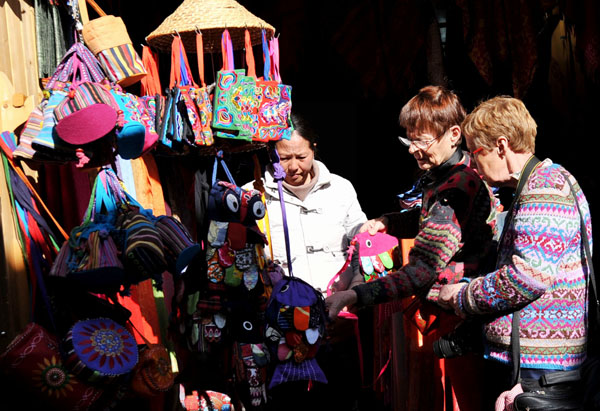
Tourists choose traditional artworks in Shangri-La. (xinhua)
Making a difference
Around 10 years ago, large numbers of residents left Bara, reducing the number of households from 60 to around 14. Sonam relocated the remaining villagers from their 3,000-meter-high mountain home to a new site slightly lower down in the river valley where farmland was created on the fertile soil adjacent to the watercourse.
Around 20 of Sonam’s 160 employees are residents of the new Bara village. Sonam Wangdu, 24, said the neighborhood has basketball courts and the villagers can make extra cash by selling home-raised pigs and chickens to visitors.
Every household in the village now earns more than 10,000 yuan a year. It may seem a paltry amount, but is actually five times higher than before the relocation, he said.
“Things are much better now, especially with the highway. The younger generation doesn’t have to walk to the county seat anymore, and they can get a much better education,” said Sonam Wangdu.
Drakpa has also extended a helping hand to improve the lives of his fellow Tibetans. In 2006, he registered the Thangka Academy to provide women with free training in traditional skills.
Most Tibetan women still only receive a basic education, which means they need to learn a skill, according to Drakpa. With this in mind, he employed a well-known master of thangka, religious paintings on silk, to deliver lectures about making the traditional artworks. In the past seven years, more than 100 women have studied at the academy and are now making a living from the skills they learned there.
“My motive was very simple: Everyone needs a better education so they can have a better life. I just did whatever I could to provide that,” said Drakpa.
Contact the writer at huyongqi@chinadaily.com.cn
Guo Anfei contributed to the story.
We recommend:
